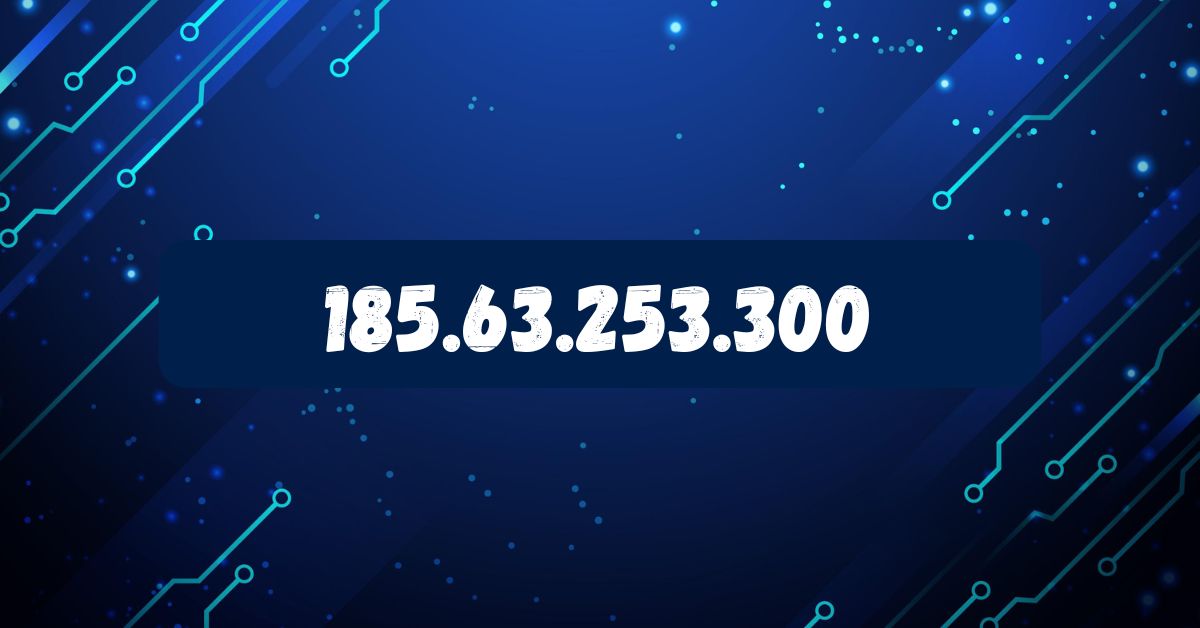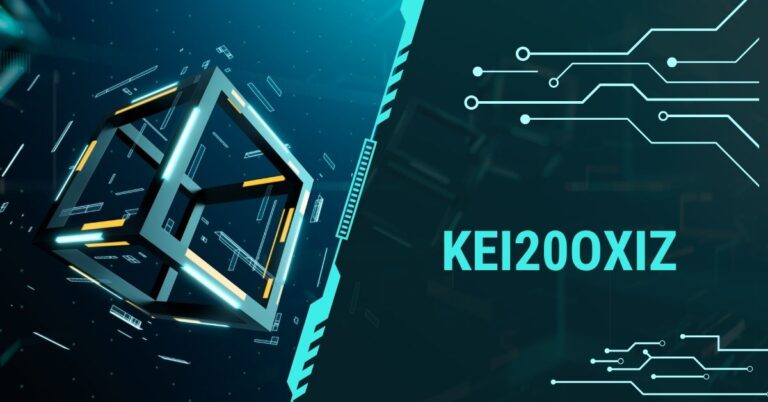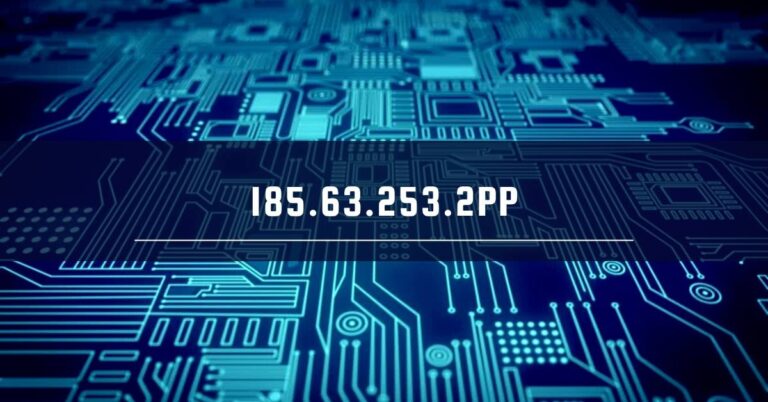Exploring “185.63.253.300” – What It Is and Why It Matters

The digital world revolves around numbers and codes that facilitate smooth communication between devices, servers, and users. One such significant set of numbers is the IP address, and in this article, we focus on understanding “185.63.253.300”. This set of digits might seem random at first glance, but as we dig deeper, you’ll come to see its relevance and purpose. We’ll explore what “185.63.253.300” represents, how it operates within the wider internet framework, and why it might be important for users or developers to take note.
The Basics of an IP Address
Before discussing the specific case of “185.63.253.300,” it’s essential to understand the concept of IP addresses. IP stands for Internet Protocol, which establishes the rules for communication over networks. Just as every house has a unique address to facilitate mail delivery, every device connected to the internet is assigned an IP address to ensure proper data transfer. These addresses allow devices, routers, and websites to identify one another.
IP addresses typically appear as a sequence of numbers separated by periods. “185.63.253.300” falls into this category, presumably as part of the IPv4 protocol since it follows the dotted decimal format. IPv4 addresses consist of four groups of numbers, each ranging between 0 and 255, but in this case, It includes a value that exceeds this range – an anomaly worth further investigation.
You May Like : An Inside Look at viloggers com
Analyzing “185.63.253.300”
At first glance, “185.63.253.300” seems like a typical IP address, but upon closer inspection, it raises some questions. The fourth segment, “300,” is problematic because it exceeds the acceptable range of values for an IPv4 address. This is a critical point to note because standard IPv4 segments are confined to numbers between 0 and 255. Consequently, “185.63.253.300” as a literal IP address would not function correctly in any traditional network scenario.
This irregularity might prompt users or IT experts to interpret “185.63.253.300” differently. Sometimes, such notations are used illustratively in documentation, representing placeholder values or offering examples without being tied to a real-world address. However, terms like “185.63.253.300” could still be relevant in contexts where slight modifications yield a valid IP address.
Possible Scenarios for “185.63.253.300”
Despite its technical limitations, “185.63.253.300” could hold specific value depending on the context in which it is being searched. Below, we outline several potential scenarios related to this term:
- Placeholder in Educational Material
Technicians or network specialists might encounter it as part of an example used in tutorials or books. Because it does not point to an actual internet-connected device, it might serve as a hypothetical or sample IP to explain functionality without impacting actual networks. - Typographical Error
There’s also a strong chance that “185.63.253.300” originated from a typographical error. For instance, the valid address might have been “185.63.253.30” with an accidental extra digit tacked on at the end. Such errors often lead to frustration when troubleshooting connectivity or network-related issues. Understanding its unnatural structure could help steer users toward rectifying and identifying minor errors like this. - Custom or Internal Use Cases
Some private systems or configurations may use terms like “185.63.253.300” in non-standard formats. For example, software developers might rely on this type of anomalous format for testing or internal data systems. Since these setups differ from public internet standards, values like “185.63.253.300” may still function in restricted environments.
Broader Context for Misconfigured Addresses
The exploration of “185.63.253.300” highlights an essential aspect of the internet protocol system – precision is critical. Every segment of the IP address has to be accurate for the internet or any private network to function effectively. Incorrect addresses, such as “185.63.253.300,” illustrate how even the smallest inconsistency can render a system unresponsive or break communication processes.
Consider the implications on network security or troubleshooting. If a typo like “185.63.253.300” slips into a sensitive configuration for a corporate network, it could cause failures to access certain services, effectively disrupting workflows. This underscores the importance of double-checking network configurations, especially when addresses are entered manually.
Transitioning from IPv4 to IPv6
The topic of Internet Protocol addresses isn’t complete without mentioning the evolution from IPv4 to IPv6. IPv4, which includes addresses like “185.63.253.300” (or more accurately, addresses with valid ranges), is approaching its limit due to the rapid expansion of internet usage worldwide. The IPv4 protocol can generate only about 4.3 billion unique addresses, which are mostly exhausted. IPv6 solves this issue by offering an almost infinite number of combinations.

Although “185.63.253.300” falls under an invalid range for IPv4, it reminds us of how essential the transition to more flexible systems has become. IPv6, with its longer formatting and ability to accommodate trillions of connected devices, ensures that limitations like those seen with “185.63.253.300” don’t hinder the growth of the internet.
IP Address Validation Tools
If you’ve come across “185.63.253.300” while managing a network or troubleshooting a failed connection, there are tools available to verify whether an IP address format is correct. Websites and software tools designed for IP validation can quickly identify if an address is within the standard range. This is particularly useful for system administrators and web developers who may overlook minor errors when inputting numerous addresses during setup.
Additionally, these validation tools can cross-reference IP addresses against databases to see if they are actively used or associated with any registered domain, offering another layer of clarity. For an irregular case like “185.63.253.300,” the tools will likely classify it as invalid, helping guide the user toward correcting any errors in their configuration.
Demystifying the Significance of “185.63.253.300”
Even though “185.63.253.300” may not be valid in a direct sense, its popularity as a search term suggests an underlying curiosity or need for clarification. For example, some users may have encountered it in older documentation, programming scenarios, or while solving technical issues. Others might mistake it for a valid IP address due to unfamiliarity with proper formatting.
Understanding the rules and structure of IP addresses can empower users to notice anomalies like “185.63.253.300” and prevent issues within their systems. Knowing what makes an address valid and how even minor deviations affect functionality underscores the complexity and interconnected nature of today’s digital environments.
Moving Forward
Although “185.63.253.300” in its literal form will not light up the path to a functioning device or server, it serves as a launchpad for exploring broader concepts. It reminds us of the intricacies of internet protocols, the necessity of accurate configurations, and the constant evolution required to meet growing demands.
By broadening our understanding of terms like “185.63.253.300” and addressing small anomalies with scrutiny, we contribute to fostering a better, more reliable digital landscape for years to come.
Read More : Exploring Fintechzoom.com Gold – A Comprehensive Insight






